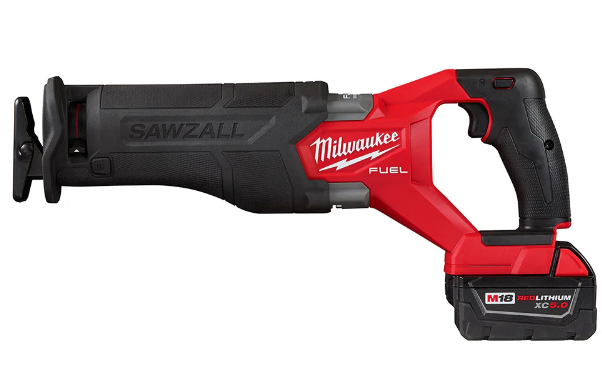
In the realm of power tools, the reciprocating saw stands out as a versatile workhorse capable of tackling a wide range of tasks. From demolition to intricate cuts, its adaptability makes it a favorite among professionals and DIY enthusiasts alike. However, like all power tools, understanding its uses and adhering to safety guidelines are paramount to ensuring both efficiency and personal safety.
Understanding the Reciprocating Saw
A reciprocating saw, often referred to as a “recip saw” or a “sawzall” (a trademarked term by Milwaukee Tool), operates on a push and pull motion of the blade. This back-and-forth action allows it to cut through a variety of materials, including wood, metal, plastic, and even masonry, depending on the blade used. The typical design includes a handle for grip and control, a motor housing, and a blade that protrudes from the front.
Uses of Reciprocating Saws
- Demolition Work: Its ability to swiftly cut through walls, pipes, and nails makes it indispensable in demolition projects.
- Pruning and Trimming: For gardeners and landscapers, reciprocating saws equipped with pruning blades are excellent for cutting tree branches and thick bushes.
- Construction and Remodeling: From cutting holes for outlets to shaping materials that other saws cannot handle, reciprocating saws are invaluable on construction sites.
- Metal Cutting: Specialized blades allow for precise cutting of metal pipes, rods, and even sheet metal, making it a go-to tool in metalworking.
Safety Tips for Using Reciprocating Saws
- Wear Personal Protective Equipment (PPE): Always wear safety goggles, a dust mask (when cutting materials that produce dust), and heavy-duty gloves to protect against flying debris and sharp edges.
- Secure Your Workspace: Ensure the material to be cut is firmly secured to prevent unexpected movement or vibrations that could lead to accidents.
- Choose the Right Blade: Use blades appropriate for the material you are cutting. Blades come in various lengths and tooth designs for specific tasks, such as fine tooth blades for metal and coarse tooth blades for wood.
- Check for Obstructions: Before starting, ensure there are no nails, screws, or other obstructions in the cutting path that could damage the blade or cause kickback.
- Control the Saw Properly: Grip the saw firmly with both hands and maintain control throughout the cutting process. Avoid overreaching and maintain a stable stance.
- Switch Off and Disconnect: When not in use, switch off the saw and disconnect it from the power source. This prevents accidental starts and ensures safety during blade changes.
Maintenance Tips
- Clean and Lubricate: Regularly clean the saw, especially around the blade area, and lubricate moving parts as recommended by the manufacturer.
- Inspect Blades: Check blades for signs of wear or damage before each use. Replace worn-out or damaged blades promptly.
The reciprocating saw is a versatile tool that empowers users to tackle a myriad of cutting tasks efficiently. By understanding its capabilities, following safety precautions, and maintaining the tool properly, users can maximize its utility while ensuring a safe working environment. Whether you’re a seasoned professional or a novice DIYer, incorporating these practices will enable you to harness the full potential of the reciprocating saw while prioritizing safety at all times.
Cedar Hill St. Louis Jefferson County Olivette Kirkwood Ballwin Arnold Franklin County St Charles County Fenton High Ridge Dittmer Creve Coeur
